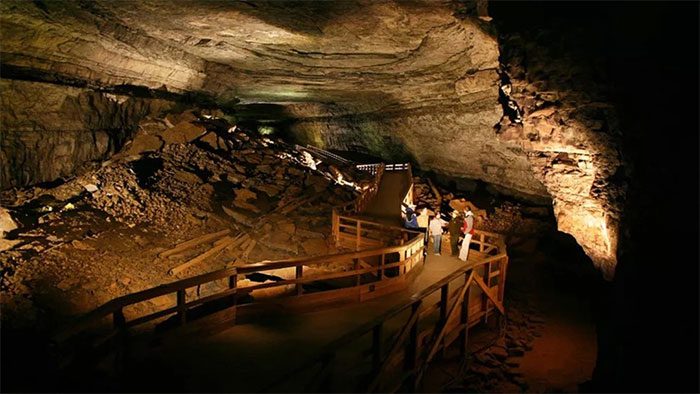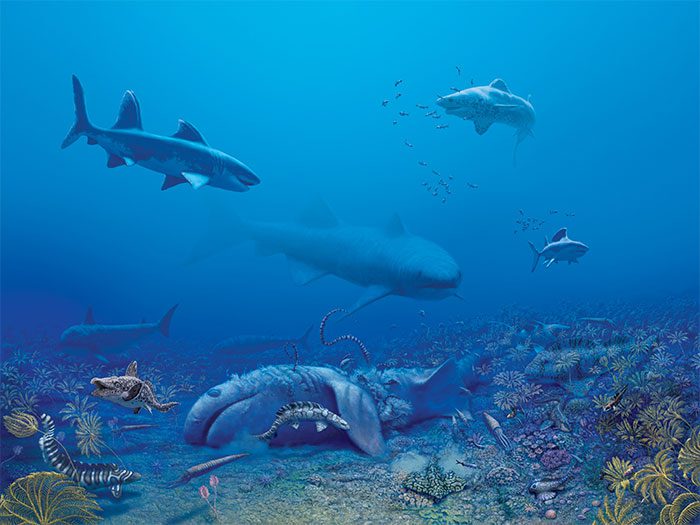Deep within the earth of the state of Kentucky (USA), lies a paleontological treasure that has captured the attention of archaeologists.
Mammoth Cave National Park is renowned as the longest cave system in the world, stretching over 686 kilometers of underground passageways. It was designated a UNESCO World Heritage Site in 1981 and remains a major attraction for tourists from around the globe.

Mammoth Cave contains numerous fossils of ancient marine creatures.
This area holds remains dating back millions of years, serving as a witness to a time when this land was submerged beneath the waters of an ancient sea.
Since the excavation of Mammoth Cave began, paleontologists have identified over 70 species of ancient fish.
Recently, they made another discovery that has garnered the interest of the scientific community.
These significant finds include two species of prehistoric sharks named Troglocladodus trimblei and Glikmanius careforum, dating back to 325 million years ago.
Troglocladodus trimblei was a colossal creature of the ancient seas, reaching lengths of up to 3.6 meters, with a body equipped with sharp teeth.
Meanwhile, Glikmanius careforum possessed powerful jaws that allowed it to prey on smaller sharks and orthocones (the ancestors of modern squids).
These discoveries challenge our understanding of the evolutionary process of sharks, indicating that some species may have appeared much earlier than previously thought.

Two newly discovered prehistoric shark species dating back to 325 million years. (Illustrative image: SP).
The fossils of these sharks were found in previously submerged areas, thousands of kilometers away from today’s coastlines.
This evidence suggests that 325 million years ago, the two states of the United States, Kentucky and Alabama, were adjacent to a thriving sea, part of a maritime route connecting North America, Europe, and North Africa.
However, these waters disappeared with the formation of the supercontinent Pangea, following the collision of tectonic plates.
This remarkable discovery underscores the importance of research in sometimes unexpected places, revealing secrets buried for millions of years.
And Mammoth Cave continues to be an invaluable source of information about the history of our planet.


















































